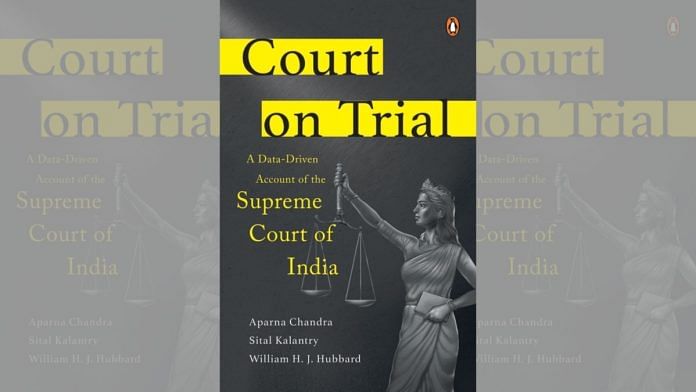New Delhi: Judiciary, one of the four pillars of democracy, is often surrounded by a cloud of doubts. For many common people, it remains an unsolved riddle, particularly when it comes to matters concerning the Supreme Court.
While most people in our country know that the Supreme Court is the highest tier of the judicial system in India, seldom do people understand its functioning and the kinds of cases that are heard in the court. ‘Court on Trial’ is an attempt to connect the common folk to the highest court of India.
In the book ‘Court on Trial’, authors Aparna Chandra, Sital Kalantry and William H.J. Hubbard present a history of the highest judicial body in India. The 75-year-old Supreme Court has been in constant discussion for some of its rulings, and people questioning if the court truly upholds the ideals of justice. This book treats each one of these controversies as a story but as life events.
Based on ten years of extensive empirical research, the book provides explanations for terms and positions such as the collegium, Chief Justice of India and more.
The authors offer an insightful overview of the Supreme Court and its often enigmatic processes. Additionally, they present data-driven suggestions aimed at enhancing the Court’s effectiveness and integrity.
Former Supreme Court judge Justice Madan B Lokur praised the book, highlighting that it is a rare contemporary research work on the functioning of the Supreme Court.
“Not only is it topical, but [it also] clearly suggests how the Court can be more efficient and effective with just a handful of reforms,” Lokur stated.
Parliamentarian and senior advocate Abhishek Manu Singhvi described the book as an “unputdownable and valuable addition” to the study of the Indian Supreme Court.
“Written forthrightly, analytically, absorbingly, and, above all, backed with solid empirical data and live examples. Not to be missed,” Singhvi said.
The authors have dedicated the book to their mentor late Professor Theodore Eisenberg, who was the actual conceive of the idea. Elsenberg was a pioneer of legal studies across the world. All three authors themselves have a legal background to themselves.
The authors have dedicated the book to their mentor, the late Professor Theodore Eisenberg, who was the original visionary behind the idea. Professor Eisenberg was a pioneering figure in legal studies worldwide. Additionally, all three authors have their own legal backgrounds, further adding to their expertise in the subject matter.
Chandra is a law professor at the National Law School of India University, while Kalantry and Hubbard are faculty members at the University of Seattle and the University of Chicago, respectively.
Also read: US Supreme Court has put an end to ‘positive discrimination’. India could take a cue



